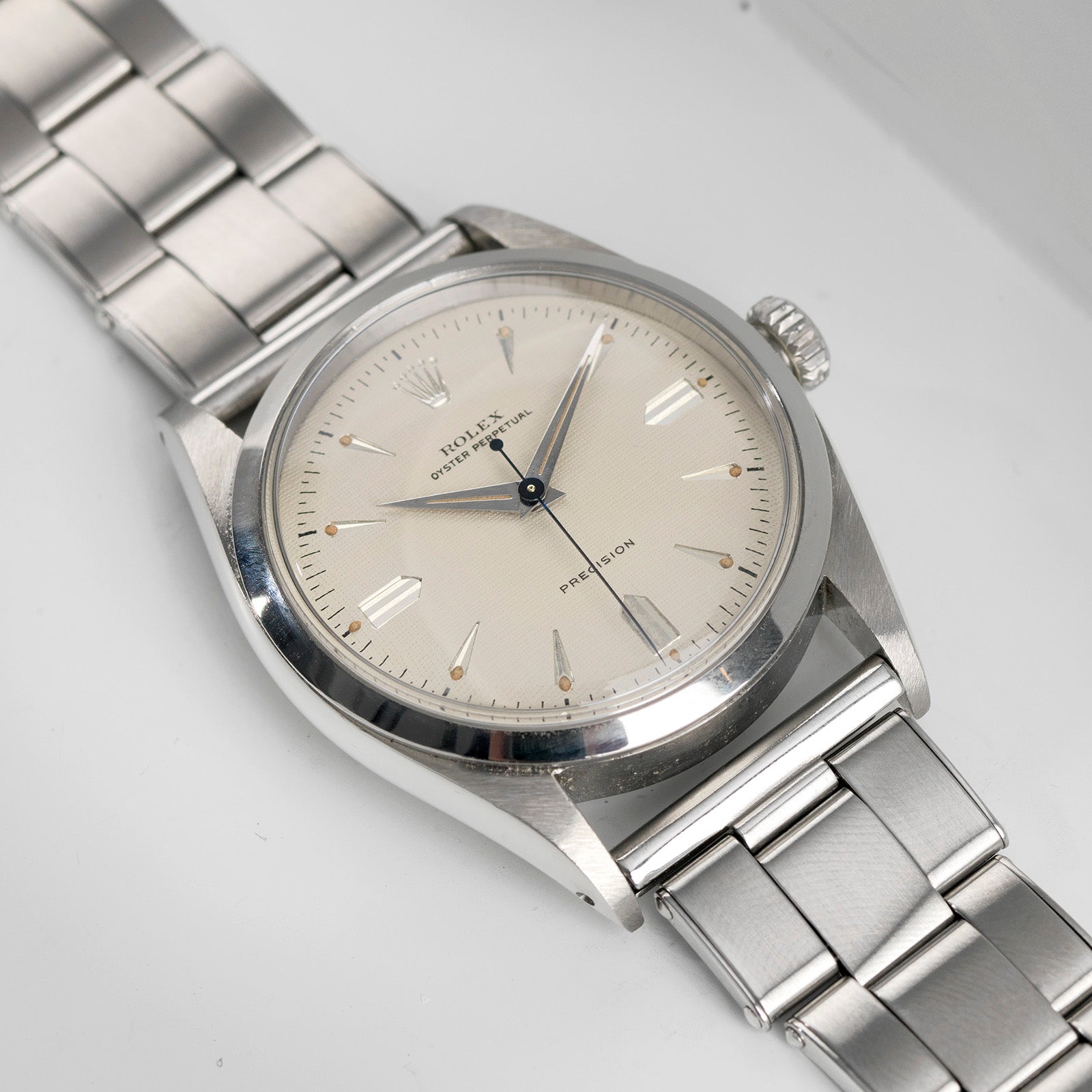Spot On – Rolex Ovettone 6298 Tapestry Dial

This weekend will see some very interesting watches go under the hammer at both Phillips and Christie’s. Of particular interest to us are a couple of very important Ovettone watches that are classed as Dress Explorers. We have discussed these pieces before and we love them due to the versatility and presence of them on the wrist. It’s important to remember that these watches were produced in the 1950s when the average size of a gent’s wristwatch was 32mm. At 36mm the Ovettone’s were big watches and due to the large rounded case back wore high and proud on the wrist! Today we are looking at one of the most eagerly sought after ovettones, the Rolex 6298 Tapestry Dial…


The Ovettone story began in the late 1940s with the 5020 series watches. These were actually a fraction larger than later big bubblebacks, measuring at 37mm. Featuring pressure fit crystals in a monoblocco case they utilised the standard bubbleback crown and tube.

(Early Ovettone 5028 – Ross Povey)
The second series of Ovettone was introduced in 1950 and was effectively a prototype tool watch. The first was a reference 6098 which like the 5020 series watches was of monoblocco construction and featured the newly designed Super Oyster Crown. The watches were powered by the A296 perpetual movement, which was very thick and therefore led to the design of the domed case back.

(Important ‘Evans Everest’ 6098 – Philipp Stahl/RPR)
I am confident in referring to the 6098 as a prototype as it was the model of watch worn by the Hillary Everest attempt in 1953. Newly uncovered documentation informs us that Rolex provided thirteen 6098s for the team in two batches (the first in 1952 to the advance research team and the second to the remaining expedition members who hadn’t been on the research trip the year before).

(The Gregory 1955 Everest ref. 6098, image by Rolex Passion Report)
And so in 1953 Rolex launched the improved pre-Explorer reference 6298. This watch had the new three-piece case with the bezel-secure tropic crystals and a new ‘brevet +’ 6mm screw down crown. And this is the model that is our Spot On today.


(Big Bubbleback Caseback)
This is a version that we have been searching for ever since Bernhard and I saw this dial variant (albeit in a 6098) in London in 2015. It is more common than not to see these pre-Explorers with repainted dials. Where the original dial is intact, it is possible to see some of the most incredible dial work in the multitude of variations that Rolex used in this era. The so-called Tapestry Dial is one of the nicest and Bernhard’s version is stunning.

The texture of the dial is actually very detailed. I am always amazed at the quality of printing that Rolex and Tudor were able to execute on these interesting dials. There are many texture variations of these dials including nobnail waffle, honeycomb, square waffle and tapestry to name a few. Just look at the complex nature of the structure…


The blued seconds hand is a classic feature of these pieces from the 1950s. The hands were treated at ferociously high temperatures which resulted in the multi-hue blues seen here…

It really is one of the most versatile watches that you can own. It looks stunning on an original straight end rivet bracelet and equally on a vintage Gay Freres beads-of-rice style bracelet. The rivet bracelet gives it a really cool and rugged tool watch look that lives up to its Pre-Explorer nickname. Later versions even had Explorer printed on the dial…


On leather it can one of two ways. For a 1950s Everest expedition look, a vintage style side-stitch strap looks brilliant. Or for a more formal and elegant look I love it on the two-tone or classy straps.




